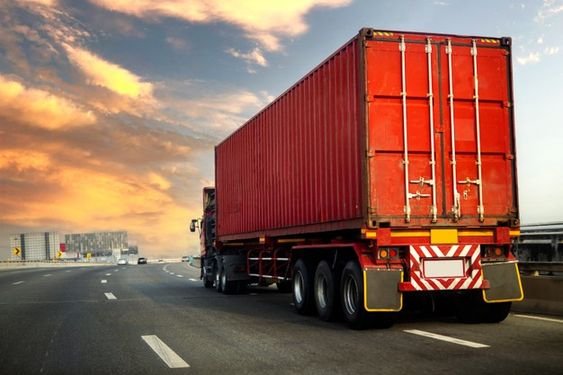
Autonomous trucks, once a far-fetched idea, are rapidly transitioning from research labs and prototype stages to real-world applications. As companies invest heavily in developing self-driving technology for trucks, autonomous trucks are poised to revolutionize the logistics and transportation industry. These vehicles promise to offer numerous benefits, such as improved safety, reduced operational costs, increased efficiency, and the potential to address labor shortages in the trucking industry. However, the path forward is filled with technological, regulatory, and social challenges. In this article, we explore the current state of autonomous trucks, the key trends shaping their future, and the potential impacts on the logistics sector and beyond.
The Current State of Autonomous Trucks
- Technological Advancements
Autonomous trucks have made significant strides in recent years, thanks to advancements in artificial intelligence (AI), machine learning, sensors, and computing power. Today’s autonomous trucks are equipped with sophisticated sensors, including LiDAR, radar, cameras, and GPS systems, which provide real-time data to navigate complex environments. Additionally, machine learning algorithms allow these vehicles to interpret data, predict potential hazards, and make decisions much like a human driver would.
Several companies, such as Waymo, TuSimple, Aurora, and Embark, are leading the charge in developing and testing autonomous truck technology. These companies have already conducted successful pilot programs and tests on highways in the U.S. and Europe, showcasing the viability of autonomous trucking technology.
- Pilot Programs and Real-World Testing
Real-world testing is crucial for refining autonomous truck technology and ensuring its safety and reliability. Several companies are running pilot programs on highways, often in partnership with logistics firms, to test the performance of autonomous trucks in real-world conditions. For example, Waymo and TuSimple have been conducting tests along major freight corridors in the United States, demonstrating that autonomous trucks can perform well under varying traffic and weather conditions.
These pilot programs have proven that autonomous trucks can safely handle long-haul routes, but they still rely on human safety drivers to monitor operations and intervene if necessary. The next phase will focus on removing human drivers from the equation, transitioning to fully autonomous operations.
Key Trends Shaping the Future of Autonomous Trucks
- Advances in AI and Machine Learning
AI and machine learning will continue to play a pivotal role in the evolution of autonomous trucks. Advanced algorithms are being developed to enhance the trucks’ ability to recognize objects, predict the behavior of other road users, and adapt to changing road conditions. For example, AI can help trucks learn from millions of miles of driving data, improving their decision-making abilities in complex environments, such as city streets and unpredictable weather.
Moreover, AI advancements will enable trucks to communicate with each other and with smart infrastructure, creating a connected ecosystem where autonomous trucks can optimize routes, manage traffic, and even platoon together for increased fuel efficiency.
- Integration of 5G and V2X Communication
The rollout of 5G networks and vehicle-to-everything (V2X) communication will be crucial for the future of autonomous trucks. These technologies will enable faster and more reliable data exchange between vehicles and infrastructure, improving situational awareness and decision-making capabilities. With low-latency 5G networks, autonomous trucks can communicate with traffic lights, road signs, and other vehicles in real-time, reducing the likelihood of accidents and optimizing traffic flow.
V2X communication will also facilitate truck platooning, where multiple autonomous trucks travel closely together at high speeds, reducing air resistance and increasing fuel efficiency. This technology could be a game-changer for long-haul trucking, significantly cutting operational costs and emissions.
- Regulatory Developments
Regulatory frameworks are a critical factor in the deployment of autonomous trucks. Governments and regulatory bodies worldwide are beginning to draft legislation and guidelines for the testing and operation of autonomous vehicles on public roads. In the United States, the Department of Transportation (DOT) and the Federal Motor Carrier Safety Administration (FMCSA) are working to create a consistent regulatory framework for autonomous trucks.
While progress is being made, there are still significant regulatory challenges, including developing standards for cybersecurity, safety, and liability. As autonomous trucks move closer to commercialization, these regulations will need to evolve to address new concerns and ensure safe integration into existing transportation systems.
- Partnerships and Ecosystem Development
Collaboration between technology companies, logistics providers, automotive manufacturers, and infrastructure developers will be essential for the successful deployment of autonomous trucks. We are already seeing partnerships such as those between Volvo and Aurora, Daimler and Waymo, and TuSimple with various freight companies. These collaborations aim to accelerate the development, testing, and commercialization of autonomous trucks by combining expertise from multiple sectors.
Additionally, the growth of an autonomous trucking ecosystem will involve building smart infrastructure, such as dedicated lanes, charging stations, and service hubs, to support the unique requirements of autonomous vehicles.
- Focus on Safety and Reliability
Safety and reliability are paramount for the widespread adoption of autonomous trucks. While autonomous trucks have the potential to reduce accidents caused by human error, they must prove themselves to be as safe—or safer—than human drivers. Companies are investing heavily in safety features, such as redundant systems, fail-safes, and advanced perception technologies, to ensure their trucks can handle a wide range of scenarios.
Testing and validation processes will continue to evolve, incorporating real-world testing, simulation, and advanced machine learning models to assess the performance of autonomous trucks in various conditions. The goal is to build public trust and confidence in the technology, which is crucial for mass adoption.
Potential Impacts of Autonomous Trucks
- Transformation of the Logistics Industry
Autonomous trucks are set to revolutionize the logistics and freight transportation industry. They offer the potential to significantly reduce costs by minimizing the need for human drivers, cutting down on labor expenses, and increasing operational efficiency. Autonomous trucks can operate around the clock without breaks, reducing transit times and improving supply chain reliability.
Furthermore, autonomous trucks could reduce fuel consumption through more efficient driving patterns and platooning, leading to cost savings and lower emissions. This transformation could result in a more competitive logistics market, driving innovation and growth.
- Addressing Labor Shortages in Trucking
The trucking industry faces a significant labor shortage, with an aging workforce and a decline in new drivers entering the profession. Autonomous trucks could help alleviate this shortage by reducing the dependence on human drivers, particularly for long-haul routes that are less appealing to drivers due to long hours and time away from home.
However, this shift also raises concerns about the displacement of jobs and the need for retraining programs to help affected workers transition to new roles in the evolving logistics sector.
- Improved Road Safety
Human error is a leading cause of road accidents, and autonomous trucks have the potential to reduce accidents by eliminating the factors that contribute to human mistakes, such as fatigue, distraction, and impairment. Autonomous trucks are designed to follow traffic rules consistently, maintain safe distances, and react more quickly to potential hazards than human drivers.
With widespread adoption, autonomous trucks could significantly improve road safety, reducing fatalities and injuries caused by truck-related accidents.
- Environmental Impact
Autonomous trucks are likely to have a positive environmental impact by reducing fuel consumption and emissions. Through efficient driving patterns, route optimization, and platooning, autonomous trucks can lower fuel consumption, reduce greenhouse gas emissions, and minimize the carbon footprint of freight transportation.
Moreover, many autonomous trucks are expected to be electric or hybrid, further contributing to sustainability goals. However, the environmental benefits will depend on the energy source used to power these vehicles and the overall mix of the energy grid.
- Economic Opportunities and New Business Models
The advent of autonomous trucks presents significant economic opportunities and the potential for new business models. For example, companies could offer autonomous truck-as-a-service (TaaS) models, where logistics providers can lease autonomous trucks for their operations without the upfront costs of purchasing and maintaining a fleet.
Additionally, the development and deployment of autonomous trucks will create new jobs in areas such as software development, data analytics, cybersecurity, infrastructure development, and fleet management. The economic ripple effect could be substantial, spurring growth in various industries connected to autonomous technology.
Challenges to Overcome
- Technological Challenges
While autonomous trucks have made impressive progress, there are still technological hurdles to overcome. Developing robust AI algorithms that can handle complex urban environments, extreme weather conditions, and unpredictable road situations is a significant challenge. Ensuring the reliability and security of autonomous systems, particularly against cyberattacks, is also a critical concern.
- Public Perception and Acceptance
Public perception and acceptance will play a crucial role in the widespread adoption of autonomous trucks. While the technology promises numerous benefits, there are concerns about safety, job displacement, and the impact on local communities. To gain public trust, companies must demonstrate the safety and reliability of their autonomous trucks through transparent testing and communication.
- Infrastructure Requirements
The deployment of autonomous trucks will require significant investments in infrastructure, such as dedicated lanes, charging stations, and service hubs. Upgrading existing infrastructure to support autonomous trucks, especially in rural and remote areas, presents a substantial challenge. Collaboration between public and private entities will be necessary to ensure the infrastructure is in place to support autonomous truck operations.
- Cybersecurity Threats
As autonomous trucks rely heavily on digital systems, they are vulnerable to cybersecurity threats. Protecting these vehicles from hacking, data breaches, and malicious attacks is crucial for ensuring their safe operation. Companies must invest in robust cybersecurity measures, including encryption, secure communication protocols, and regular software updates, to mitigate these risks.
Conclusion
The future of autonomous trucks is filled with promise, offering the potential to revolutionize the logistics and transportation industry. With advancements in AI, 5G, and machine learning, autonomous trucks are becoming more capable and reliable, setting the stage for a new era of freight transportation. However, numerous challenges remain, including regulatory hurdles, public acceptance, and technological development.
As the technology continues to mature, we can expect to see autonomous trucks gradually integrated into the logistics ecosystem, starting with long-haul routes and expanding to more complex environments. The next decade will be pivotal in determining how quickly and effectively autonomous trucks become a reality, reshaping the future of transportation and logistics.
Ultimately, the success of autonomous trucks will depend on collaboration among stakeholders, the development of robust regulations, and a commitment to safety, security, and sustainability. The road ahead may be challenging, but the potential rewards are immense, promising a future where goods move faster, safer, and more efficiently across the globe.





